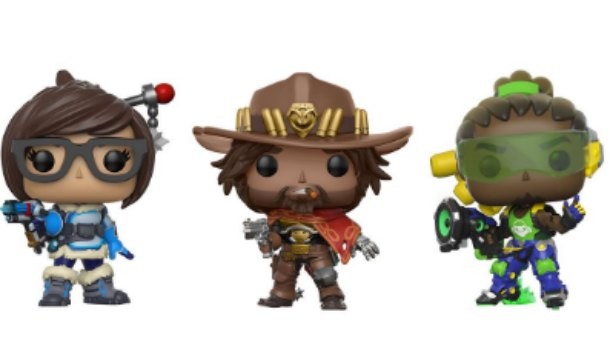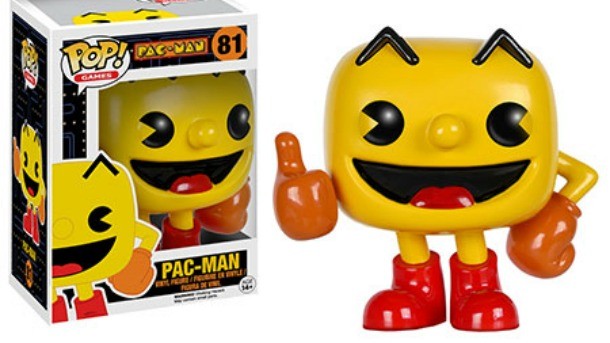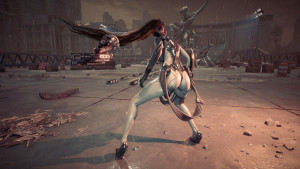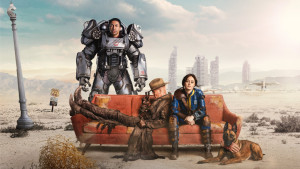Please support Game Informer. Print magazine subscriptions are less than $2 per issue
A Look At The Funko Pop! Collectible Phenomenon

This article was originally published April 26.
If you have spent time in a store that sells collectibles in the last few years, you may have noticed that a certain brand of vinyl figures have seemingly taken over its own share of the market. Funko Pop! Vinyls cover a wide variety of licenses and brands, including film and television series, video games, sports teams, and even cereal mascots. Love them or hate them, there’s no denying the all-encompassing phenomenon they’ve become. We spoke to Mark Robben, director of marketing for Funko, to get some insight into the Pop! Phenomenon, and learn about the licensing and production process for the figures.
Robben says that the now-iconic Funko design came out of a collaboration with DC Entertainment around 2010.
“There were just discussions with DC in particular, about coming up with a new stylized take on some of the characters,” Robben says. “And our artists at the time were influenced, in that case, by Japanese art and character design, looking at some of the things that have been done there with anime figures and whatnot. There have also been some early designs with plush, that had kind of a similar shape and feel to them, and it just kind of evolved naturally.”
After the success of the DC collaboration, as well as adapting other licenses such as Star Wars, the Pop! Brand grew exponentially. Funko currently produces products for more than 80 popular licenses, most of them with Funko Pop! counterparts. Yet, the licensing process varies between properties.
“There are lots of licenses out there that are newer, or have something they’re about to launch and would like to merchandise their content...and they’ll come to us,” Robben says. “But there are certainly instances where we are chasing, too, where we’ve seen something or heard about something and we’re saying, ‘We need to go get that.’”
Robben says that the amount of time Funko’s artists have to work on a product can vary, depending on how comfortable a licensor is with sharing assets ahead of launch.
“There are plenty of licensors that send us reference art well before the shelf date of a video game or the in-market date for a movie,” Robben says. “You know, we’ve been working on Episode VIII, from Star Wars, for a few months, so that’s far more than six months’ notice.”

Robben says that when it comes to the design process, video game companies are generally much more involved with the process than other licensors.
“Almost across the board, whether it has been Blizzard or Riot, you know, generally speaking they tend to be – and this is not a bad thing – they tend to be more involved and more protective,” Robben says. “I would guess that it’s because they have really invented these characters and the character designs from the ground up, they’re oftentimes not based on people or actors.”
Character creation is a big part of the Pop! Brand, and is a very involved process on both the part of Funko’s designers and the license holders. Funko mostly builds its designs based on what the licensees want to see, and how well it works in the trademark Pop! art style. Robben also said that they are always taking fan feedback into account, monitoring social media channels after a collaboration is announced to get a read on what characters and designs fans want.
The development process itself is incredibly complicated, and happens quickly. Artists sketch 2D character renditions, which get approved by the licensors before getting 3D digital sculpts. The sculpt then goes through a painting process, which is again approved by the licensor. Packaging mock-ups and handpainted samples of the figures come next, to get a better idea of what the final product might be. After those samples are approved, two more waves of samples are developed, starting with what Robben called “pre-production samples” and “top samples.” Once both of these are finalized, the full product goes into production and hits store shelves.
The turnaround for this process varies greatly, depending both on the license and the characters being produced. Generally, Funko prefers to work in a four-to-six month window, but it sometimes has to move quicker.
“We can move really fast. There are times when licensors will say, ‘We can't show you this character, it's just too secretive,’” Robben says. “And then the movie or game premieres and we kind of say, ‘Wow, that’s an amazing character, we didn’t get that in the reference art, we want to make a figure of that immediately.’ So then we kind of snap to attention and get it in process, and we can have something in market within 90 days if we have to.”
One particular example of this came from 2014’s Guardians of the Galaxy, where Robben says that Dancing Groot had a turnaround of just a few months.
Funko has garnered tremendous, unprecedented success with its unique brand of figures. With an accessible price point and a wide variety of licenses, the Funko Pop! Brand has certainly made a name for itself in the small collectible space. When asked why people are drawn to them so strongly, Robben chalked it up to the figures’ signature look.
“I think the art style really resonates with people,” Robben says. “It’s cute, it’s fun, it’s adorable, it’s playful.”










